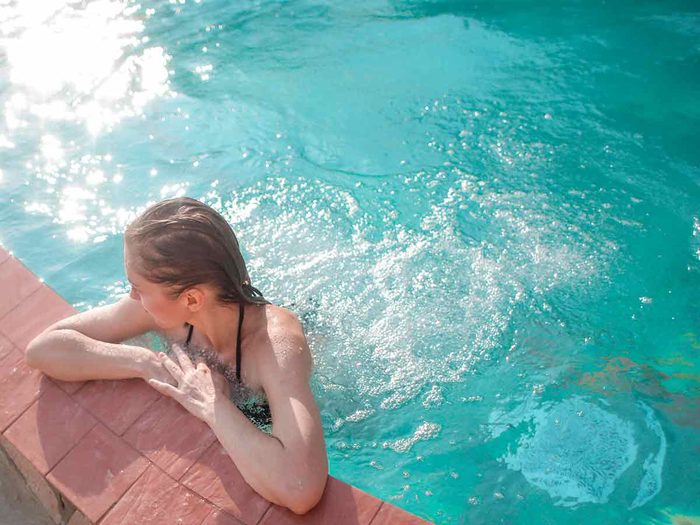
Watch out for chlorine.
Chlorine is a common additive to keep pathogens and bacteria from ruining everyone’s favourite summer activity, swimming in a pool. What you might not expect is how chlorine can trigger chemical reactions with other common elements and compounds. “If the water has copper in it, as well water often does, the copper can become oxidized by chlorine,” shares Doris Day, MD, clinical associate professor of dermatology at NYU Langone Health. “In turn, it can bind to the hair shaft and turns blonde hair green.” Dr. Day recommends wetting hair with tap water before swimming so strands can’t absorb as much chlorinated water, then using a vinegar rinse after swimming to keep hair free of green hues. (Also, these blonde hair products can help you maintain those icy locks.)
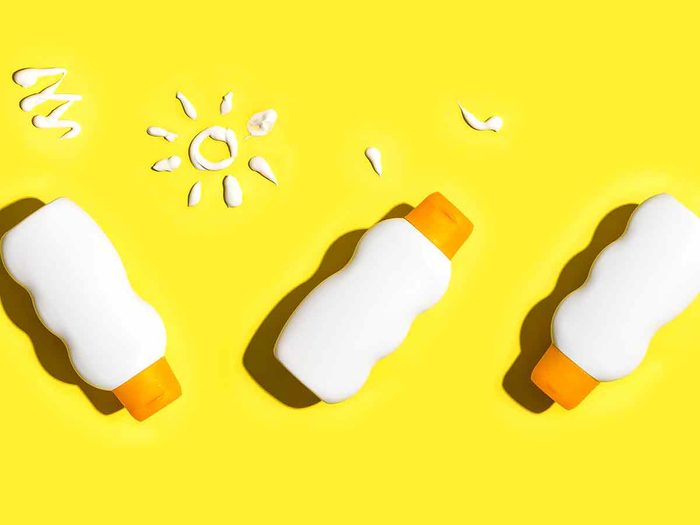
There’s a right and a wrong SPF for you.
Using sun protection is one of the most important beach safety rules for people of all ages, but did you know not every sunscreen formula is safe, especially for little ones, pregnant and nursing women, or those with sensitive skin? “Common sunscreens contain chemical ingredients like oxybenzone, avobenzone, octinoxate, and other hard-to-say words,” explains Estee Williams, MD, a board-certified medical and cosmetic dermatologist. “The absorption of these chemicals into the bloodstream can have side effects, which is why mineral sunscreens with active ingredients like zinc oxide could be a better choice for babies and children.” Check out the best mineral sunscreens you can buy in Canada.
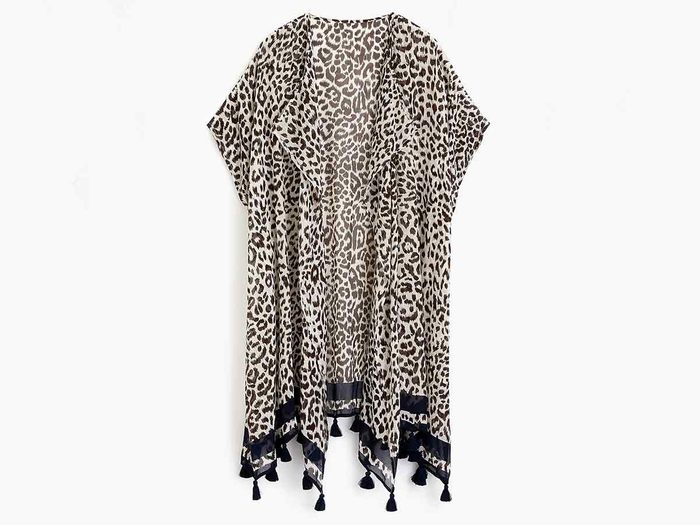
Cover up—sunscreen isn’t enough.
Applying sunscreen gets to be a full-time job if you’re spending an entire day by the beach or the pool. “You really need to reapply your sunscreen every hour,” explains Dr. Day, who also authored Beyond Beautiful, a book devoted to the secrets of healthy beauty. “That’s not easy to do for the average person, which is why sun protective clothing and shade should always be part of your plan.” In case you missed a spot with your sun protection, here’s how to soothe sunburns naturally.
Try: J.Crew’s Leopard Beach Poncho.
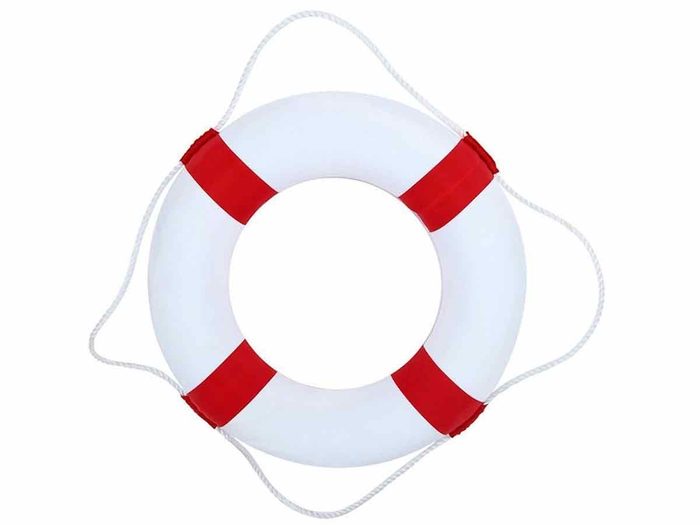
Have a standard safety float within reach.
Adorable pink flamingo floats and other fun inflatables are certainly trendy, but the experts at Safety.com urge young and novice swimmers to always choose standard life rings for very practical reasons. It’s a lot easier and faster to throw it at the deep end in a pinch to help a struggling swimmer (rather than running on concrete and throwing a giant unicorn). If you’re heading out on the open water, look for a safety float that is Coast Gaurd approved.
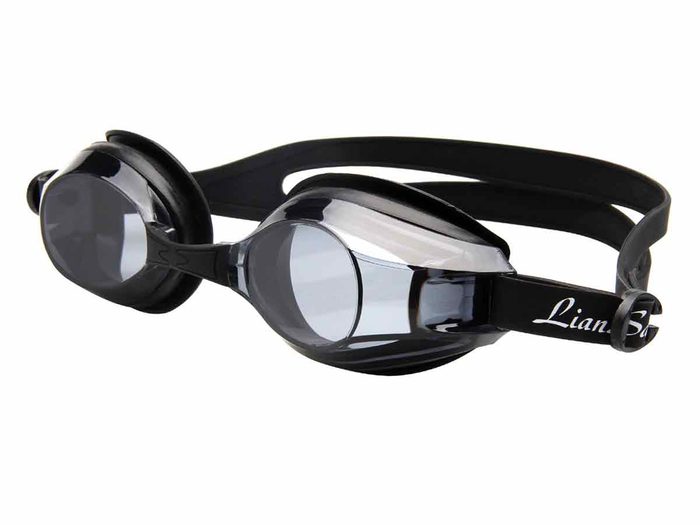
Take out your contacts.
“If you swim with your eyes open and wear contacts, chances are good that they will fall out and be lost. Finding a contact on land is hard but in the water, it is almost impossible,” says Lee Sao Bing, MD, an eye surgeon who writes about swim safety for eyes. “If you wear contacts in the pool and lose them you won’t be able to see when you are out of the water either. Some people try to swim with their glasses on, but this still doesn’t protect your eyes from the chemicals in the pool. If you worry about not being able to see without glasses or contacts but want to see while in the pool, consider prescription goggles.” (Also, read this before you buy contacts online.)
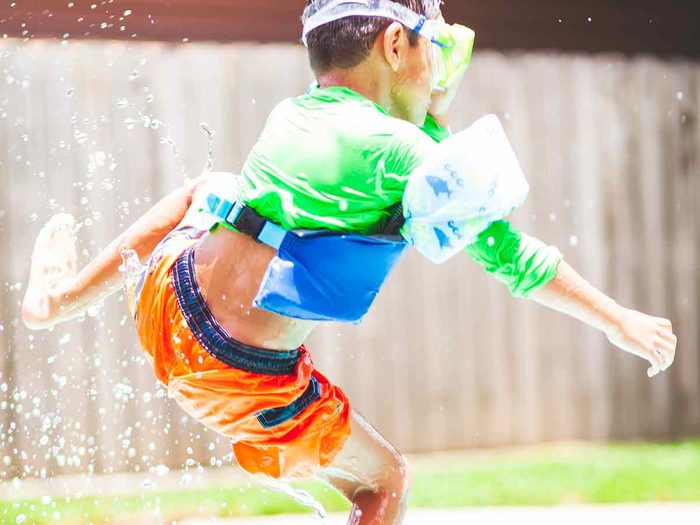
Forget the water wings—put a strapped life vest on kids.
Drowning is a very real risk, especially for younger children who haven’t quite mastered swim skills yet. Lifeguards recommend using strapped life vests on small children. Inexpensive inflatable arm floaties tend to fall off without anyone noticing until it’s too late. The life vest you choose should have a secure three-point buckling system and both arm and body support.
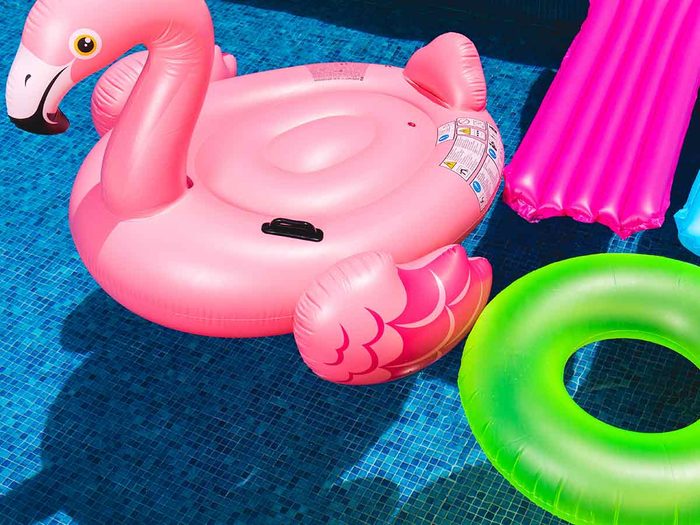
Does your float have a weird smell? Toss it.
This may be the worst news you get this summer—but just about any super fun, whimsical pool float with a weird odour probably has PVD-inclusive plastics, which this study deemed a major health risk. Skip the ‘gram-worthy pool floats altogether, or stick with another EVA-based option.
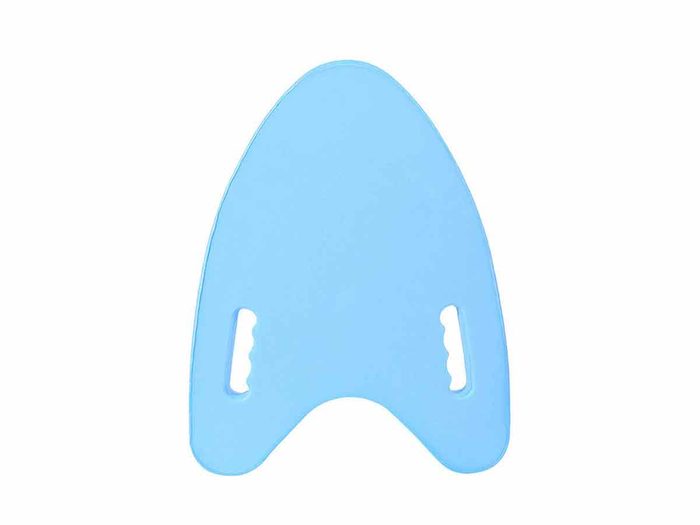
Upgrade your kickboard to an eco-friendly version.
Now that you’re aware of PVA foam being common in pool toys, you’ll want to see if your kickboard is made of that or the safer alternative, EVA. Also known as ethylene-vinyl acetate, EVA is still a plasticized foam but is generally considered safe if children are frequently exposed to it. Try this EVA kick board.
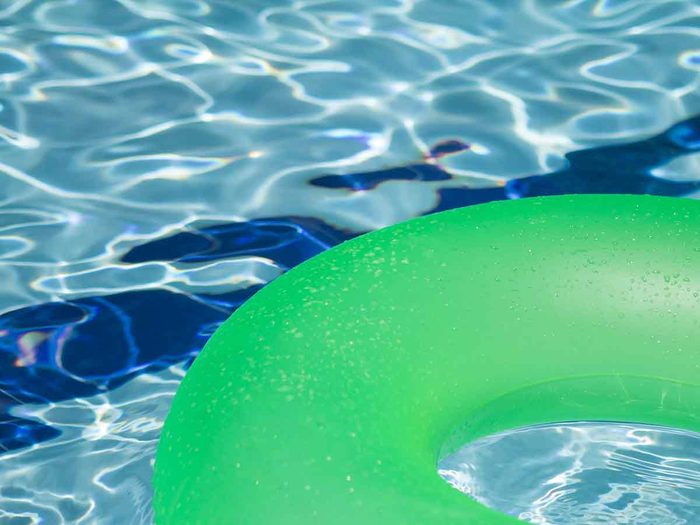
Don’t use pool floaties defined as a”habitat.”
Say no to inflatable house-style swim toys. The Good Housekeeping Research Institute found almost all styles of habitat pool toys are prone to flipping over, sometimes leaving swimmers stuck inside. Stick to fun chairs by the pool deck, or fitness-inspiring floating balls.
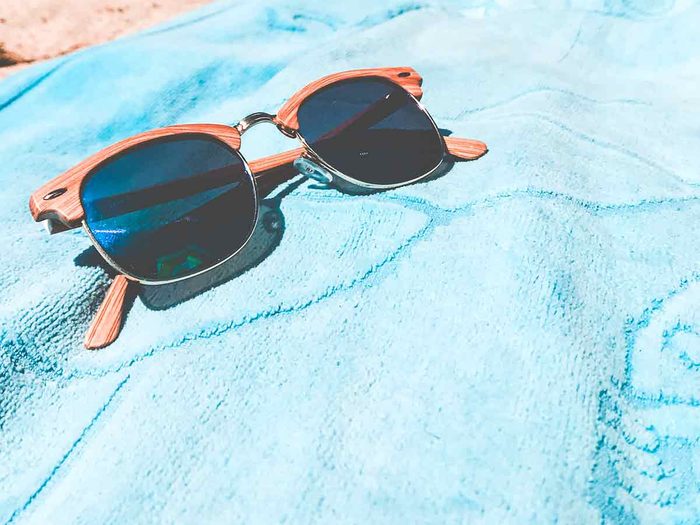
Clean and dry towels fully or you could get sick.
Towels need to be fully dried to keep bacterial growth at bay—or you could end up spending a few days in bed. In fact, this research paper from the University of Arizona says towels are basically resorts for E. coli and other disgusting germs, which is pretty gross news for everyone’s pool bag. Exposure to UV light and thorough drying is your best bet, but if that’s unrealistic or you’re pressed for time, antimicrobial and quick-dry towels are good alternatives.
Next, check out the health benefits of swimming year-round.
